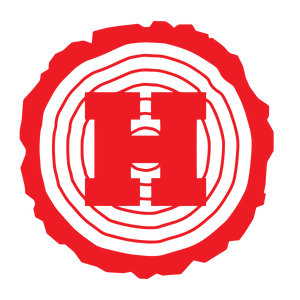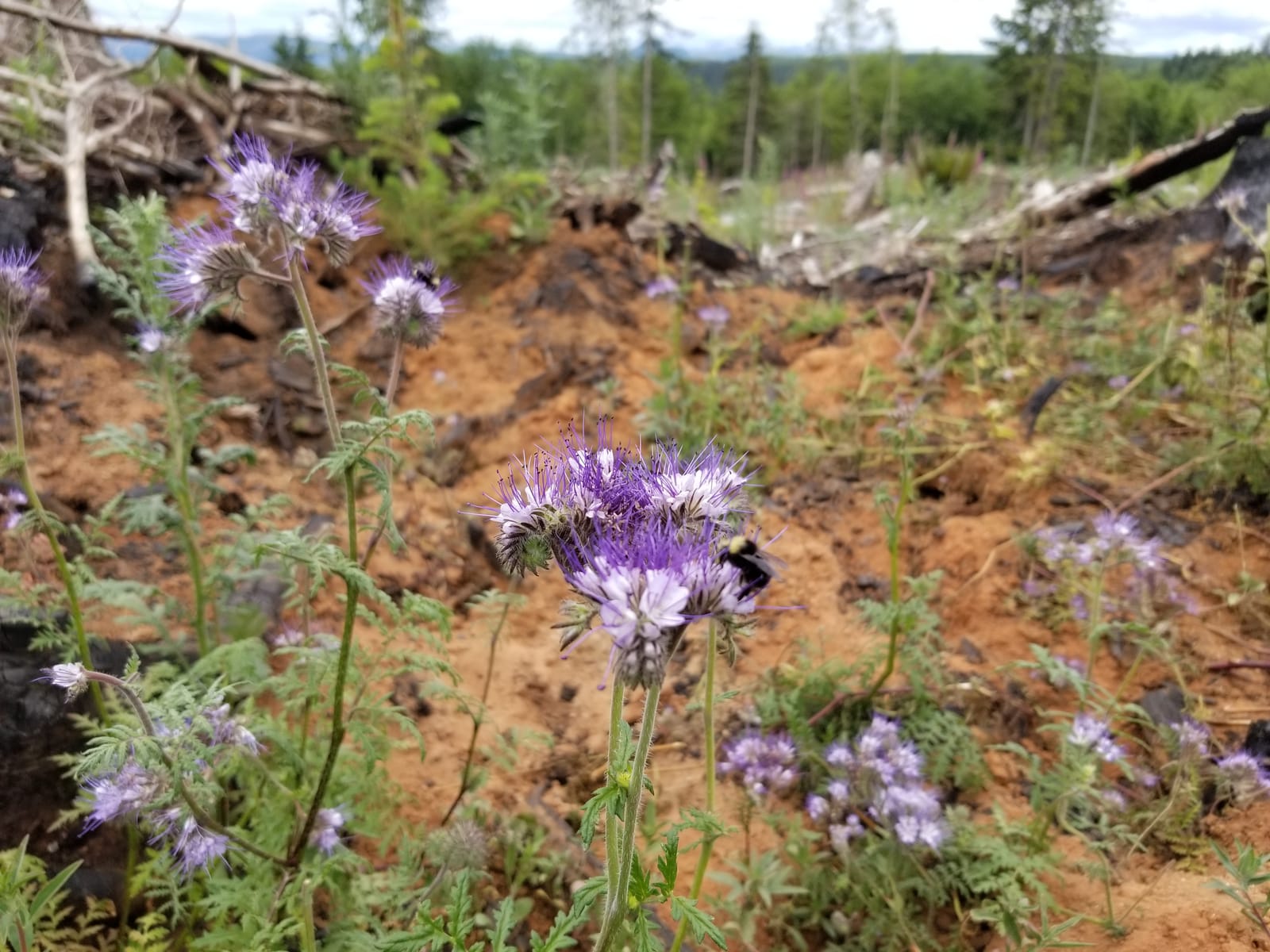Hampton’s working forests provide raw materials for a variety of value-added wood products but they also create a wide range of habitat opportunities and ecosystem services as trees grow and mature. Recent studies have revealed that timber harvest sites can act as important pollinator habitat by opening up areas of forest canopy for habitation by plant and animal species that require more sunlight to thrive. We're interested in how we might enhance these habitats on our own forestlands.
When we began our pilot pollinator enhancement program in 2017, there was very little information available about which native bees made use of forest habitat and no substantive information about how post-harvest management might affect bees. Our partners in the conservation and academic community encouraged us to try out different management prescriptions and evaluate their effectiveness.
Hampton’s pilot pollinator habit enhancement project seeks to further improve that habitat by creating food and nesting conditions on harvest sites that are ideal for important pollinator species. At the moment our efforts are focused on native bees.
Researchers are only just beginning to examine forests as pollinator habitat, so there are not yet established best management practices (BMPs), or even recommended techniques for enhancing habitat. Hampton’s groundbreaking efforts in the area could help scientists identify what practices are most effective for forestland owners who may want to implement their own programs in the future.
We’re fortunate to be working with experts at the Oregon Department of Forestry (ODF) and Oregon State University’s (OSU) Pollinator Health Program who are at the forefront of this kind of research.
Over the course of three years (2018-2021) we treated over 165 acres of recently harvested forestland with different variations of habitat enhancement.
Treatments include:
- Sewing seed of native plants that are particularly valuable to pollinators, either as food or habitat.
- Creation and maintenance of piles of woody debris to serve as nesting sites.
- Altering woody debris management to increase competitiveness of flowering plants.
- Maintenance of small areas of cleared, lightly disturbed top soil for ground nesting species.
- Creation of treatment exclusion zones within the pilot project area for research into the effectiveness of the pilot treatments.
- Pre- and post-treatment species surveys to provide indications of the effectiveness of treatments.
Our ongoing research has resulted in valuable data on the effectiveness and costs of different treatments and have piqued the interest of our partners in the academic community.
What's Next?
After several years of experimentation we have learned a lot about what seems to work and what doesn’t. We are now focused on assessing the impacts of timber management practices, which appear to support native pollinator populations, and standardizing habitat improvement techniques.
In 2019/2020 we shifted the focus of the program from informal to structured experimentation with the intent of identifying cost-effective techniques to increase pollinator species density and diversity in harvest sites. Although we still do multi-acre demonstration installations to use as educational tools, most of our recent work has been focused on the creation and evaluation of discrete test treatments. This includes experiments on methods for increasing forage beneficial to native pollinators. These experimental treatment sites will be monitored for three years in cooperation with partners at Oregon State University and the Oregon Bee Project.
Using our preliminary results, we're providing planning and installation assistance to other forest landowners interested improving pollinator habitat on their properties, including education institutions, non-profit land trusts, and other timberland owners.
We are also expanding our pollinator project to parts of the Willamette Valley in Oregon, and in 2024, we plan to develop several test plots on our North Cascades timberlands near Sedro-Woolley, Washington.
Meet our “Bee Keepers”
Lindsay Davis
Knappa, Oregon
Tel. 503-741-5084
Email: lindsaydavis@hamptonlumber.com
Jessica Espy
Sedro-Woolley, Washington
Tel. 503-741-5084
Email: lindsaydavis@hamptonlumber.com
Follow our pollinator work on Instagram @HamptonFamForests
Our Pollinator Project - In the News
Wildlife in Managed Forests: Native Bees, Oregon Forest Resources Institute
Western Innovator: Creating pollinator habitats in forests, Capitol Press
Hampton Lumber Research Project Centers on Improving Pollinator Habitat with Wildflower Plantings in Clearcuts, Tillamook County Pioneer
From Clearcut Trees to Habitat for Bees, Daily Astorian


